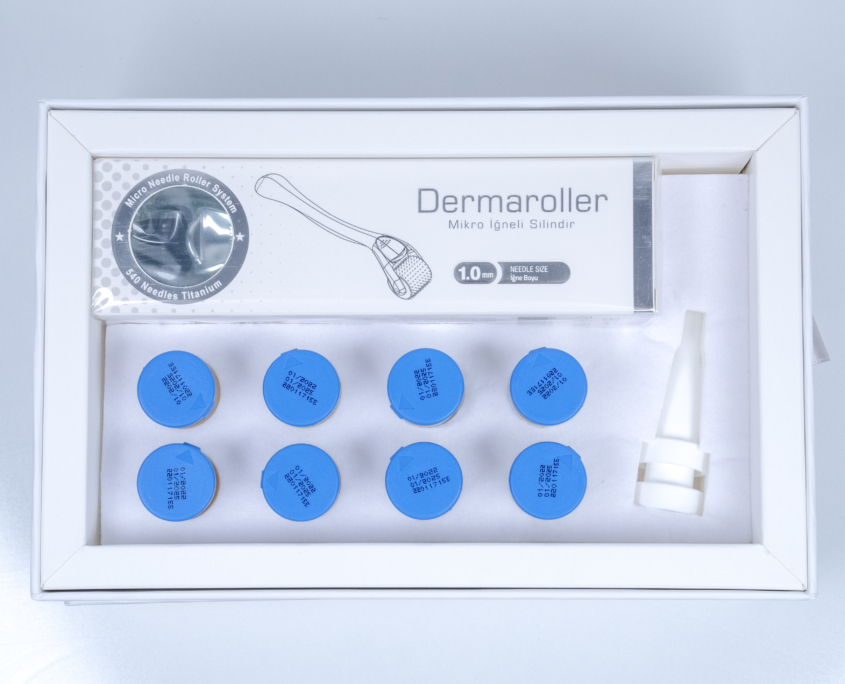What is a Derma Roller?
A derma roller is a handheld device equipped with numerous small, fine needles. When rolled over the scalp, it creates microscopic punctures. This minimally invasive procedure is known to stimulate the skin’s natural healing process and can enhance scalp health, potentially improving the results of hair transplant surgery.
The Healing Process and Timing
Understanding the healing process post-hair transplant is crucial before considering the use of a derma roller. The scalp needs time to recover from the surgery, with the initial few weeks being critical for the healing of transplant sites. As such, introducing a derma roller too early can interfere with this process and compromise the success of the transplant.
Based on our expertise and reviewing the latest practices in the field, we recommend patients wait at least 10 to 12 weeks post-surgery before starting with a derma roller. This waiting period allows the transplanted follicles to securely anchor themselves, reducing the risk of dislodging grafts or causing unnecessary irritation.
Benefits of Derma Rolling After Hair Transplant
When performed at the appropriate time in the healing process, derma rolling can offer several benefits:
- Enhanced Blood Circulation: The micro-injuries created by the derma roller stimulate blood flow to the scalp, bringing essential nutrients and oxygen that support hair growth.
- Improved Efficacy of Topical Treatments: The increased absorption facilitated by the micro-channels can make topical treatments for hair growth more effective.
- Stimulation of Hair Growth: The process encourages the scalp’s natural healing response, which includes the production of growth factors beneficial for hair regrowth.
Safe Practices for Using a Derma Roller
To ensure safety and effectiveness, follow these guidelines:
- Select the Correct Needle Length: For post-hair transplant care, a needle length of 0.5mm is generally recommended. This size is effective enough to stimulate the scalp without causing deep penetration that could harm the grafts.
- Maintain Hygiene: Sterilize the derma roller before and after each use to prevent infection. Using a medical-grade disinfectant is advisable.
- Gentle Application: Apply the derma roller with light pressure to avoid trauma to the healing scalp. Overaggressive use can lead to unwanted complications.
- Regular, But Not Frequent Use: Once a week is sufficient for most patients. Excessive use can lead to irritation and hinder the healing process.
Consultation is Key
Before incorporating a derma roller into your post-transplant care routine, it’s essential to consult with your hair transplant specialist. At Dr. Yetkin Bayer Clinic, we offer personalized advice based on the specific details of your surgery and healing progress. Our priority is to ensure that any post-operative treatment or tool you use, including the derma roller, is safe and beneficial for your unique situation.
Conclusion
Integrating a derma roller into your post-hair transplant care regimen can offer significant benefits, contributing to the overall success of your hair restoration journey. By following expert guidance and adhering to safe practices, patients can enhance their scalp health and potentially improve the results of their hair transplant surgery. At Dr. Yetkin Bayer Clinic, we are committed to providing our patients with comprehensive care and support, ensuring they achieve the best possible outcomes with their hair restoration goals.
Why to use derma roller after hair transplant?
Derma roller is the name given to cylindrical devices with at least 192 needles, the length of which can vary from 0.25 mm to 2.5 mm. With Derma roller, very successful treatments can be done in the cosmetic field and in some skin diseases. Derma roller selection is made by the doctor according to the patient’s problem. Derma rollers with 0.5-1.0 mm tips are used in people who are made for rejuvenation purposes and do not have very deep wrinkles; derma rollers with 2.5 mm needle tips are preferred in patients with deep acne scars. Derma roller is effective thanks to the microdelics that these micrognes open in the skin. It detects these micro delegates as skin wounds and begins the synthesis of new connective tissue with growth factors. In this way, a complete regeneration of the skin is initiated. In addition, treatment products selected according to the person’s problem are used in derma roller application. Thanks to microdelics opened with Derma roller, the absorption of these treatment products is also increased by about 200 times. In this way, a large proportion of the patient’s complaints can be improved.
Can Microneedling affect hair transplant?
Microneedling, also known as skin needling, is a type of cosmetic therapy that uses a skin roller with small needles to cause little skin injuries to cure various aging effects.
On the other hand, microneedling may also help increase stem cells in hair follicles, which may contribute to hair growth. Microneedling may also aid in the absorption of hair loss therapy products.
As a result, yes microneedling affects hair transplant in a positive way. Some experts believe that it even gives way to the release of growth factors or directly stimulates hair growth as a result of the minor lesion caused.
Does hair shed after Derma rolling?
Although there are a limited number of studies on the use of Derma roller in hair treatments, it has been observed in studies that the micro-needling method increases the rate of results when used together with the Minoxidil product and triggers the hair growth process faster.
When to use derma roller after hair transplant?
You can use derma roller after hair transplant from the fifth month after operation. You can use dermarols with hair serum on your scalp. For the first few days, redness and burning of the scalp are felt, because the scalp has to get used to the application.

